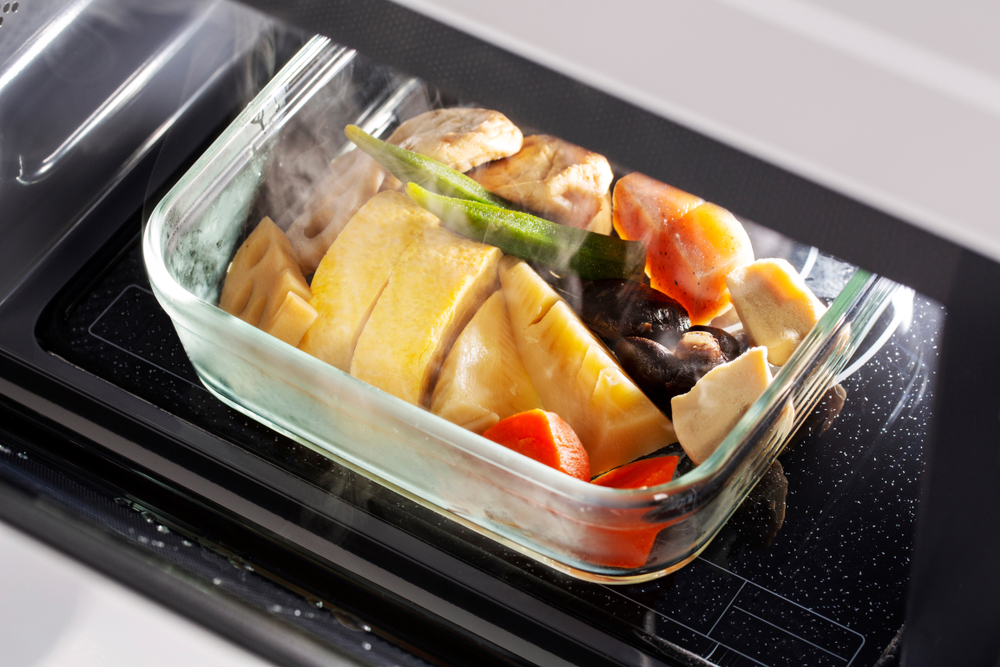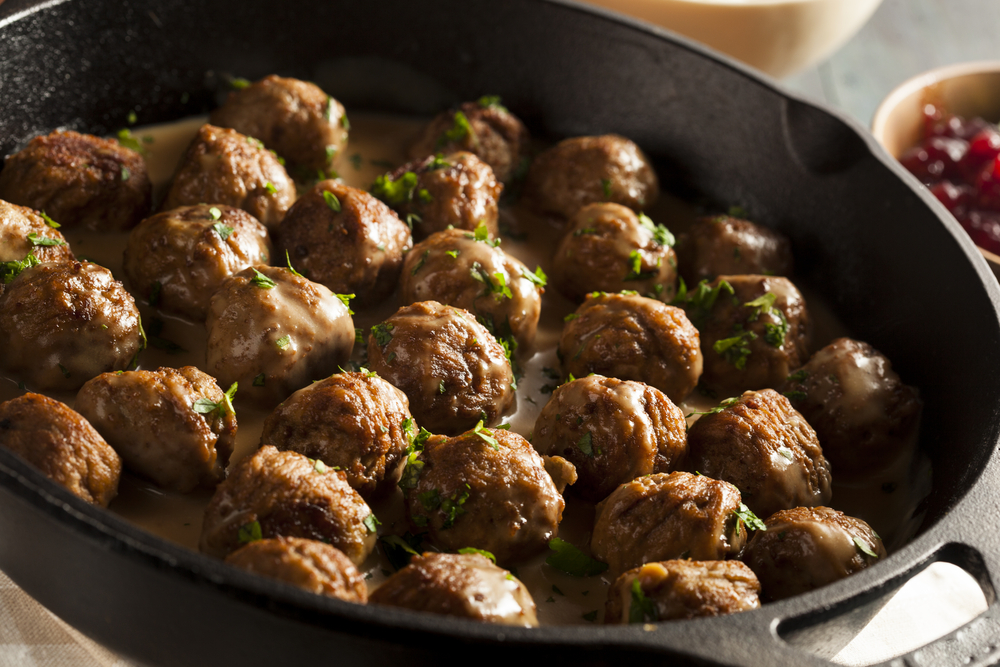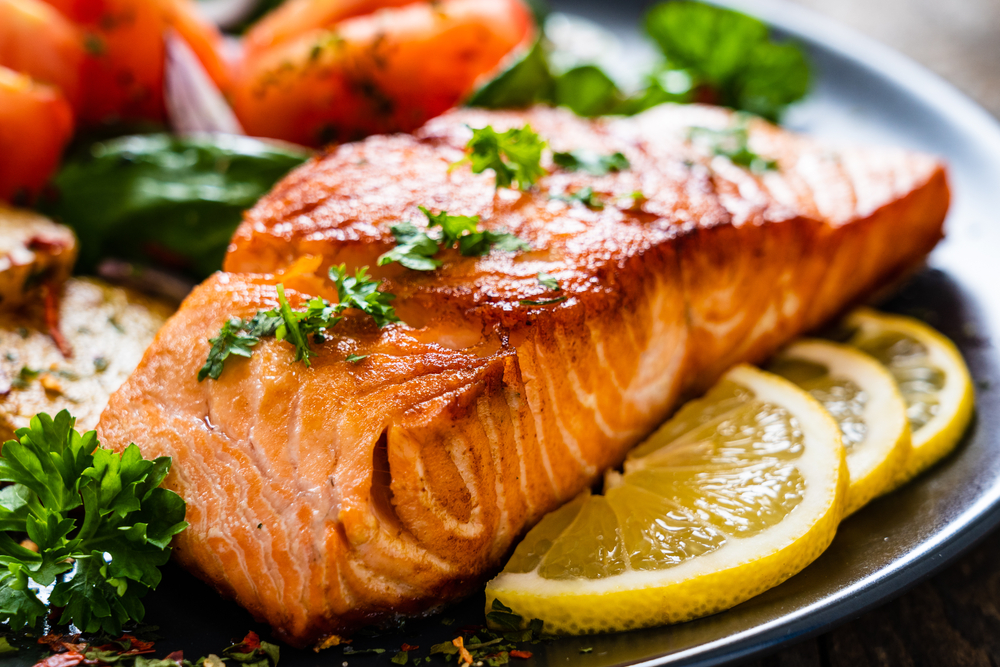Shrimp is a very popular dish
But what about leftovers? Can shrimp be safely reheated?
Yes, shrimp can be reheated. In this guide, we will look at the four best methods (microwave, steaming, skillet, and oven) to use when reheating shrimp that ensure your leftovers are safe and delicious.
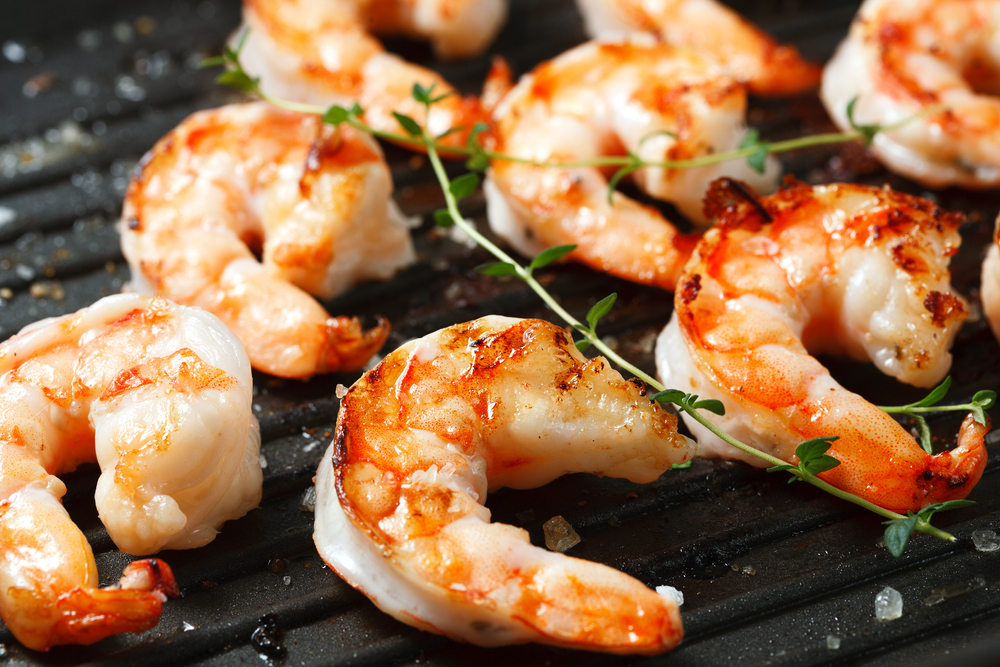
Reheating Basics: Is It Safe?
Like other precooked proteins, shrimp can be reheated, but with some effort. It is important that regardless of whatever reheating method you choose, you reheat your shrimp until it has an internal temperature of 145 degrees Fahrenheit in order to kill off any bacteria that could make you sick.
To help ensure that your shrimp will reach its desired temperature evenly across all pieces, make sure that any frozen pieces have thoroughly dethawed before attempting to reheat.
Additionally, keep in mind that shrimp is generally considered safe to consume within 24 hours of being refrigerated. It should never be left out of the refrigerator for longer than two hours.
Reheating Basics: Will It Still Taste Good?
According to Fred Thompson’s “The Big Book of Fish and Shellfish,” shrimp can be reheated without losing its flavor or texture as long as you don’t overcook it; overcooked shrimp will be chewy and its original flavor will be less detectable.
One way to ensure that no pieces become too soggy during the reheating process is to space out your pieces in a single-layer stack. This will allow each piece to be heated evenly, regardless of which reheating method you choose.
Another way to ensure that your reheated shrimp maintains its texture and doesn’t become too dry or too soggy is to prepare it correctly so that the meat retains its moisture. For example, adding a dash of water or using light foil wrapping when reheating can help keep your shrimp pieces appropriately moist.
Please note that some meals are best served with cold shrimp. For example, leftover shrimp that was previously grilled or sauteed can make for a great salad topping when used as a leftover. Similarly, shrimp that had previously been prepared for a shrimp cocktail appetizer can again be used as a stand-alone snack or as a meat option on a salad when reusing the shrimp for a second meal.
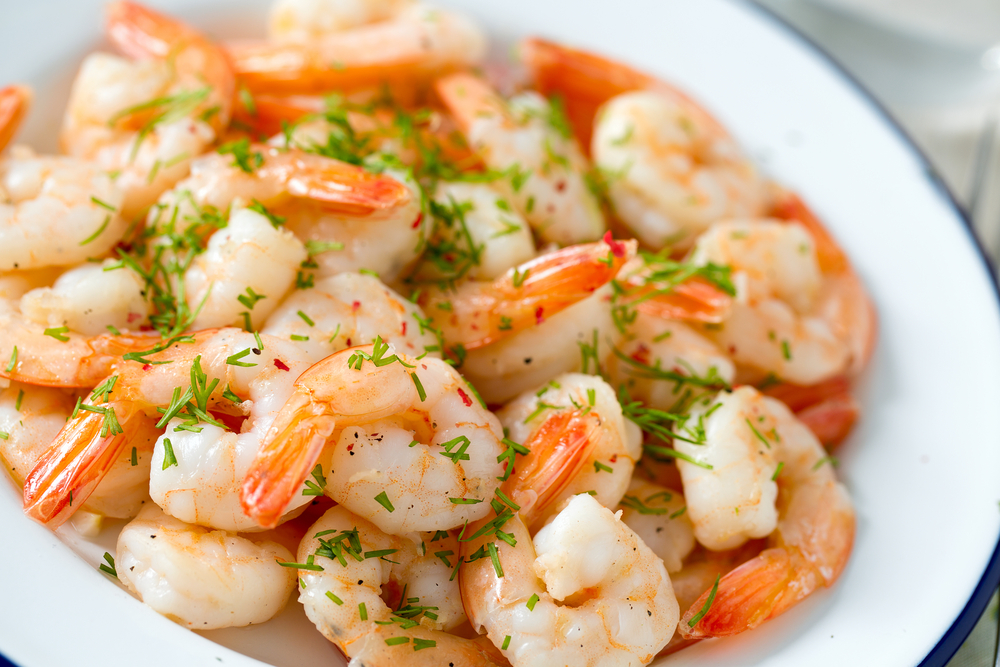
So how should you reheat your shrimp leftovers? Let’s take a closer look at the four methods most commonly used to reheat shrimp leftovers.
Method 1: The Microwave
Arguably the most convenient method of preparing any leftover meal, you can reheat your cooked shrimp in the microwave. This is a great method to use to reheat your shrimp if you’ve brought your leftovers to work to have for lunch, for example.
Though fast and easy, this method does increase the risk of overcooking your reheated shrimp, which may lead to a loss in flavor and texture. This method comes with an increased risk of your shrimp coming out too rubbery or tough, so make sure you follow these directions thoroughly in order to avoid these outcomes.
This method is not recommended for any shrimp that has been breaded or fried. This is because the breading of the outer layer of the shrimp won’t retain its crispiness in the microwave. The microwave is only effective at warming up your food thoroughly, not retaining its original texture. Microwaving any breaded shrimp meal, such as popcorn shrimp or coconut shrimp, will cause the breading to be soggy, detracting from the overall flavor of the shrimp.
Examples Of Types Of Shrimp That Can Be Reheated Using This Method:
- Fried shrimp
- Shrimp and grits. Talking about grits, learn how to reheat grits.
- Shrimp scampi
Supplies You’ll Need:
- A microwave
- A microwave-safe bowl or casserole dish
- A lid that fits the microwave-safe bowl or casserole dish or plastic wrap to use as a cover
- Water
Steps:
- Place your cooked shrimp in a microwave-safe bowl or a casserole dish. Arrange the pieces in a single-layer to cook each piece evenly. It is fine if the pieces tough side-by-side, but they should not be piled one on top of another in order to ensure that each piece is heated thoroughly.
- Splash your cooked shrimp with a little bit of water to help maintain the meat’s moisture and to reduce the chances of overcooking it.
- Cover the bowl or casserole dish with a lid or plastic wrap. Using a lid or cover will help maintain moisture as your pieces reheat and will provide your shrimp with a steaming method.
- Cook on high for 1-minute intervals, checking in between each round to see if each piece is hot through the middle. The number of intervals that will be needed will vary depending on the effectiveness of your microwave, how the original shrimp was stored, and how long it has had to dethaw before being reheated.
- Remove your dish from the microwave carefully and allow the shrimp to cool before eating.
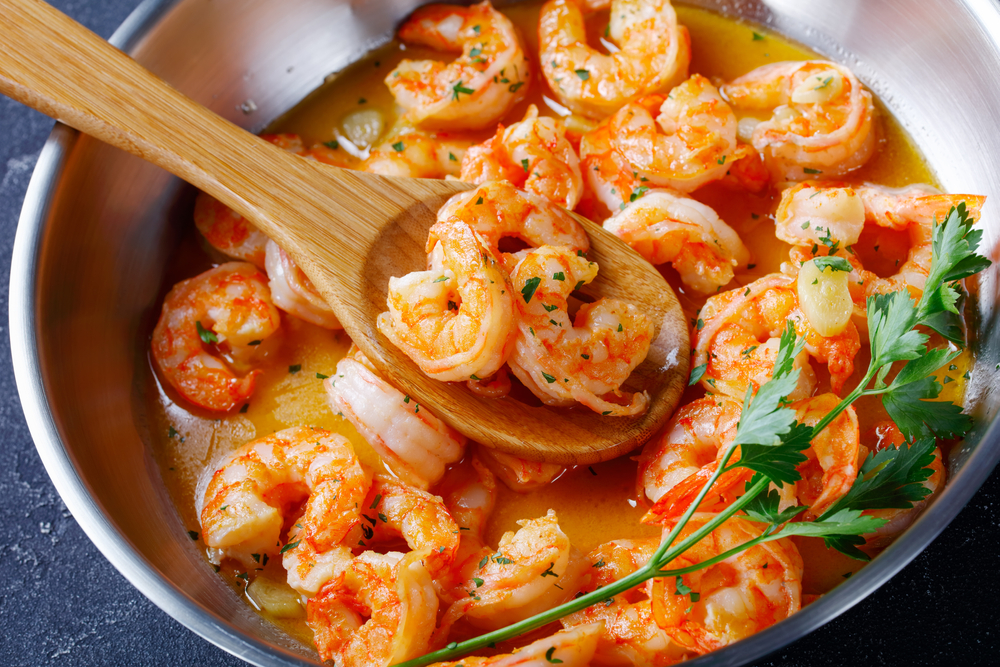
Method 2: Steaming
Steaming is another effective way of reheating shrimp. The steam generated from boiling water creates a continuous heat source to cook your leftovers. This is considered one of the healthiest ways to prepare your food.
Steaming is one of the most recommended methods for reheating shrimp because it allows the pieces to retain their original moisture and flavor. Nearly all types of cooked shrimp can be reheated using the steamer except breaded shrimp. Reheating breaded shrimp, such as coconut shrimp or popcorn shrimp, in the steamer will make the breading soggy and your shrimp will lose all of its original flavorings.
Examples Of Types Of Shrimp That Can Be Reheated Using This Method:
- Boiled shrimp
- Steamed shrimp
- Grilled shrimp
Supplies You’ll Need:
- Double-boiler or a large pot
- A steamer or steaming rack or a strainer
- Water
Steps:
- Fill the pot approximately halfway with water. Do not overfill – you do not want the bottom of your steamer to touch the top of the water line or to be submerged in water.
- Put the steamer insert into the pot and arrange your shrimp pieces in a single-layer. In the absence of a steamer insert, you can use a bowl or a strainer in its place. It is fine if your pieces touch side-by-side, but do not pile them one on top of another, as doing so will prevent some pieces from being reheated thoroughly.
- Put the double-boiler on the stove and turn on the heat. Allow the water to boil for several minutes while your shrimp pieces reheat.
- Continue to check your pieces to ensure that they aren’t being overcooked. Generally, once the pieces become fragrant, that is when you will know that they are done being reheated and are cooked thoroughly enough to be consumed.
- Turn off the heat and let your shrimp cool for a few minutes before eating.
Method 3: Oven
This is the preferred method of reheating shrimp when your pieces contain any dry ingredients, such as coconut or breading like on popcorn shrimp. This is the best way to ensure that your shrimp maintains the right texture and that each piece still has its crunch and crispiness.
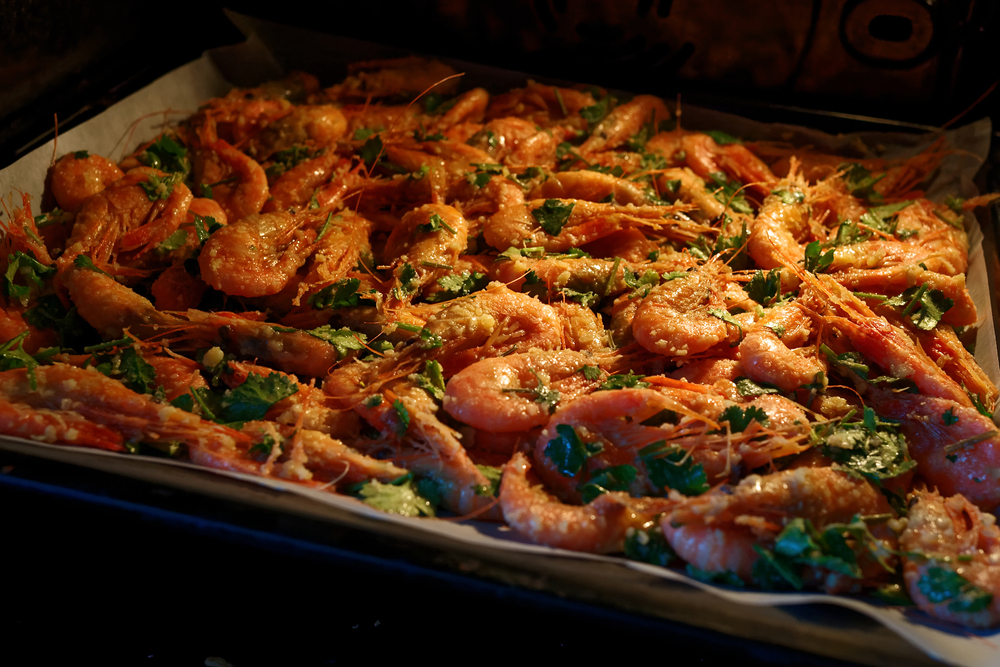
This method is also effective when reheating large amounts of shrimp at once. Please note that a high temperature is not used to reheat your meal when using this method. This is to ensure that your shrimp pieces are not overcooked and don’t come out too dry. It’s helpful to remember that your meat has already been cooked once – you are just using the oven to warm it up to enjoy again.
Examples Of Types Of Shrimp That Can Be Reheated Using This Method:
- Generally, any type of shrimp meat that was previously baked
- Shrimp scampi
- Fried shrimp
- Popcorn shrimp
- Coconut shrimp
Supplies You’ll Need:
- An oven-safe baking tray
- Baking paper
- Aluminum foil
- Optional: butter or oil
Steps:
- Preheat the oven to 300 degrees Fahrenheit.
- Wrap your shrimp pieces loosely in aluminum foil. This will help each piece maintain moisture while they reheat. Optional tip: coat each piece with oil or butter to seal in the taste before covering with foil.
- Place your shrimp pieces in a single-layer on an oven-safe tray. It’s fine if the pieces are touching side-by-side, but do not layer them one on top of another.
- Put the tray in the oven and let them cook for approximately 15 minutes. Check the oven periodically to ensure that you aren’t overcooking your shrimp. It is fine to move the pieces slightly as they cook to help mix any additional oil or butter that has been added or to make sure that each piece is cooked evenly. Just make sure that if you choose to mix your pieces as they cook, you replace the aluminum foil each time to keep the moisture locked in.
- Double-check that each piece has been reheated all the way through before determining that your meal is done being cooked.
- Remember to use potholders when removing the tray from the oven. Let your shrimp pieces cool for a few minutes before eating.
Method 4: Skillet On The Stovetop
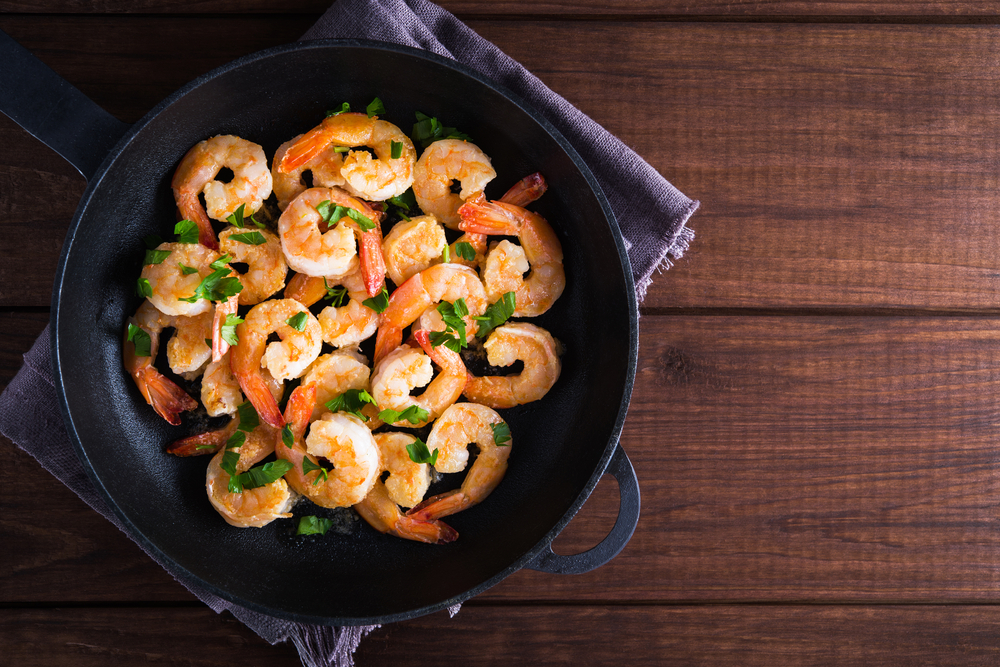
Along with steaming, this is the preferred method for reheating your cooked shrimp. As with steaming, reheating shrimp in a skillet helps it to maintain its texture. This method works with all types of prepared shrimp except breaded shrimp, such as popcorn shrimp and coconut shrimp.
When you reheat shrimp on the stovetop, you have the option to add additional spices to your prepared pieces to reinvigorate its flavoring. Feel free to add additional seasoning or sauces to your shrimp as you prepare to reheat it in the skillet or frying pan.
Additionally, using a skillet on the stovetop allows you to add other ingredients to your reheated shrimp, creating a whole new meal with your leftover shrimp pieces. For example, you can saute your shrimp with vegetables, noodles, or mix in rice when using the skillet method.
Examples Of Types Of Shrimp That Can Be Reheated Using This Method:
- Shrimp alfredo
- Fried shrimp
- Sauteed shrimp
- Skewered shrimp
Supplies You’ll Need:
- A frying pan or skillet
- A liquid cooking oil such as olive oil
- Optional: additional sauces, seasoning, or butter
- Optional: foil to cover the pan
Steps:
- Heat a frying pan or skillet over medium heat until it becomes evenly hot across its bottom. This will ensure that your shrimp pieces cook evenly regardless of their placement on the pan.
- Apply a thin layer to the bottom of the pan or skillet, preferably olive oil or another liquid cooking oil. This will prevent your pieces from overcooking and will allow them to cook thoroughly without sticking to the bottom of the pan or skillet. Optional: you can use butter instead of a liquid oil when using a frying pan or skillet. This will give your reheated meal an enhanced flavor.
- Add your shrimp pieces in a single-layer to the bottom of the pan or skillet. It is fine if the pieces touch side-by-side, but they should not be piled one on top of another.
- Cook your shrimp for approximately 3-5 minutes, taking care to flip each piece periodically so that they cook evenly on both sides. If you are mixing in additional ingredients, such as sauces, seasoning, or other ingredients, take care to mix these items periodically as well so that everything in the pan or skillet is cooked evenly and has equal access to the additional flavoring. Optional: if you are concerned about maintaining moisture levels with your meat, you have the option to use a single sheet of aluminum foil to cover the pan.
- Turn off the heat of the stovetop and let the pan or skillet stand for a few minutes. Be careful when moving your food onto your plate, as the pan or skillet will be quite warm from the heat.
Can I Reheat Fried Shrimp?
Absolutely, you can! In fact, fried shrimp is one of the easiest shrimp dishes to reheat because it will warm up with greater consistency than other shrimp meals. Though the microwave and stovetop are both methods that can be used to reheat fried shrimp, the best method to use is the oven. This will help retain the fried shrimp’s crispness and overall flavoring.
Conclusions And Final Tips:
Don’t be intimidated by reheating your shrimp leftovers – in many cases, it’s just as easy as reheating any other leftover meal!
Microwaving, steaming, using the oven, or cooking on the stovetop are the safest, most effective ways to reheat any shrimp meal to enjoy a second time. Be sure to pay attention to the type of shrimp that you are reheating and choose the method outlined above that will best preserve the original flavoring and texture of the meat.
Remember to bring the refrigerated shrimp to room temperature before you reheat it, regardless of the method chosen. If the shrimp is cold during the reheating process, it won’t reheat evenly and will have some unappetizing cold spots that detract from its overall flavoring and texture.
One final piece of advice: shrimp should not be reheated more than once, as doing so can cause contamination. Only prepare as much as you think you will actually eat to preserve as much of your leftovers as possible.
Make sure to double-check the quality of your shrimp before beginning the reheating process to ensure that your food is safe to eat. The most important thing to keep in mind during any meal prep, especially one involving meat, is to ensure that what you are about to eat is still safe to consume.
Happy shrimping!



